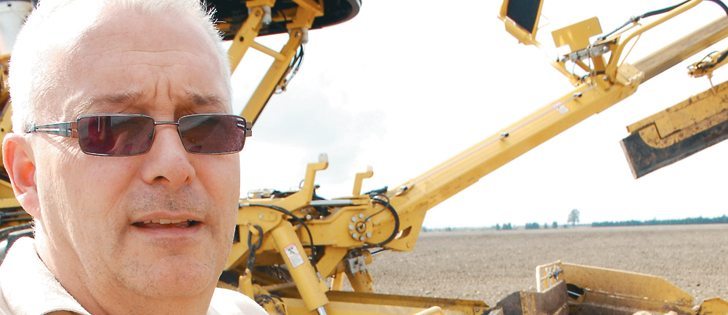Canadians use a lot of water.
Environment Canada says the average Canadian household used 329 litres of water a day in 2004, compared to the European average of 200 litres per day and 10 to 20 litres per day in sub-Saharan Africa.
It seems Canadians have something to learn about water conservation.
Three families in Cecil Lake, B.C., have learned the hard way to control their water use.
Many families in that part of the country buy their household water by the truck load. Ground water is generally poor quality and not everyone is happy with dugout water.
Read Also

Canadian Food Inspection Agency extends chronic wasting disease control program consultation deadline
Date extended for consultation period of changes to CWD program
These families use an average of 60 litres per day. They’ve learned it doesn’t take more to keep themselves and their houses happy and clean.
Research has determined that paying for water affects the amount people use.
Environment Canada says metered households used an average of 266 litres per day in 2004, while flat rate users consumed 467 litres per day, which is a difference of 76 percent.
Maya Wenger, a mother of four, said a limited supply forces people to think differently about water.
“All the teaching they have been doing on water conservation, we have been doing all these years,” she said.
Added her daughter Esther, 12: “I think that we’re more aware of the need to save water.”
Doris Edwards agreed.
“We can run out. That’s part of it. I know that there isn’t an absolutely endless supply.”
Edwards and husband, Dwayne, raised three girls on cistern water.
So how do these families do it?
Environment Canada said 35 percent of household water is used for bathing. For these three families, a bath is a luxury. Showers are short. They insist that daily showers aren’t necessary to stay clean and smell good. Water saver shower heads are the norm.
Beni Gut, who raises three children, two of them teenaged girls, with his wife, Irene, said such efforts become more difficult as children become older.
“We notice that the kids shower more and longer now,” he said.
Gut has considered putting a timer in the shower or making it coin operated like in camping grounds.
Toilets typically use 30 percent of an average household’s water consumption. Most of the Cecil Lake families have low flush or dual flush toilets, and all of them go by the motto, “if it’s yellow, let it mellow. If it’s brown, flush it down.”
Some use outhouses when outside in the summertime.
The Edwards family has made four weeks of water last an extra two weeks by buying a dual flush toilet and a front load washing machine. A 7,500 litre truck load of water costs about $95.
“It made about four or five days difference when we changed washing machines,” Gut says of his family’s front load washer.
The Wengers have a top load washer but have figured out how to make it more efficient.
“We have a big utility tub right beside the washing machine,” Wenger said.
“I drain the main water, and then I rinse on warm and I save the rinse water as the wash water for the next load. So other than the first load, I use half the amount of water.”
Doris Edwards said it’s important to always run the washing machine full. She didn’t allow her girls to do their own laundry because they would use more water.
Does it bother these families that they have to save water like this?
“No,” said Doris Edwards.
“I am used to it. I grew up having to be careful about using water.” The others agree and are more likely to point out the good side.
“A benefit from saving water is that you heat less water and use less power,” said Beni Gut.
Added Irene: “You recognize how valuable water is.”
However, there is one area they would change if they could.
“If I could just use as much as possible – the shower. Just to stand under it for as long as I want,” Irene said.
Added Beni: “the rest is just habit.”
Water saving tips
- Always run the dishwasher full.
- When waiting for hot water from the tap, catch the cold water and use it to water plants or fill the kettle.
- Put water in the refrigerator for cold water to avoid running the tap until water is cold.
- Don’t run the tap at full power to wash hands.
- Don’t let water run while brushing teeth or shaving.
- Don’t fill the sink more than necessary to do dishes.
Source: Marianne Stamm research














